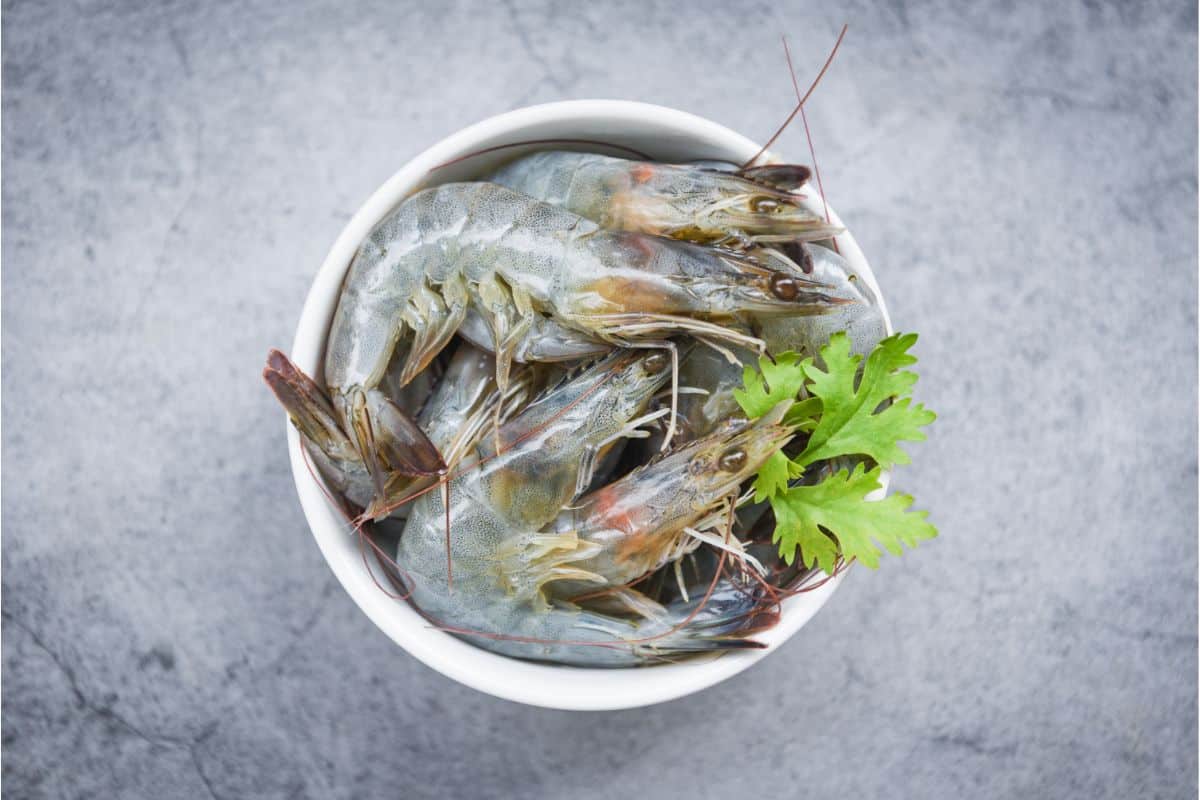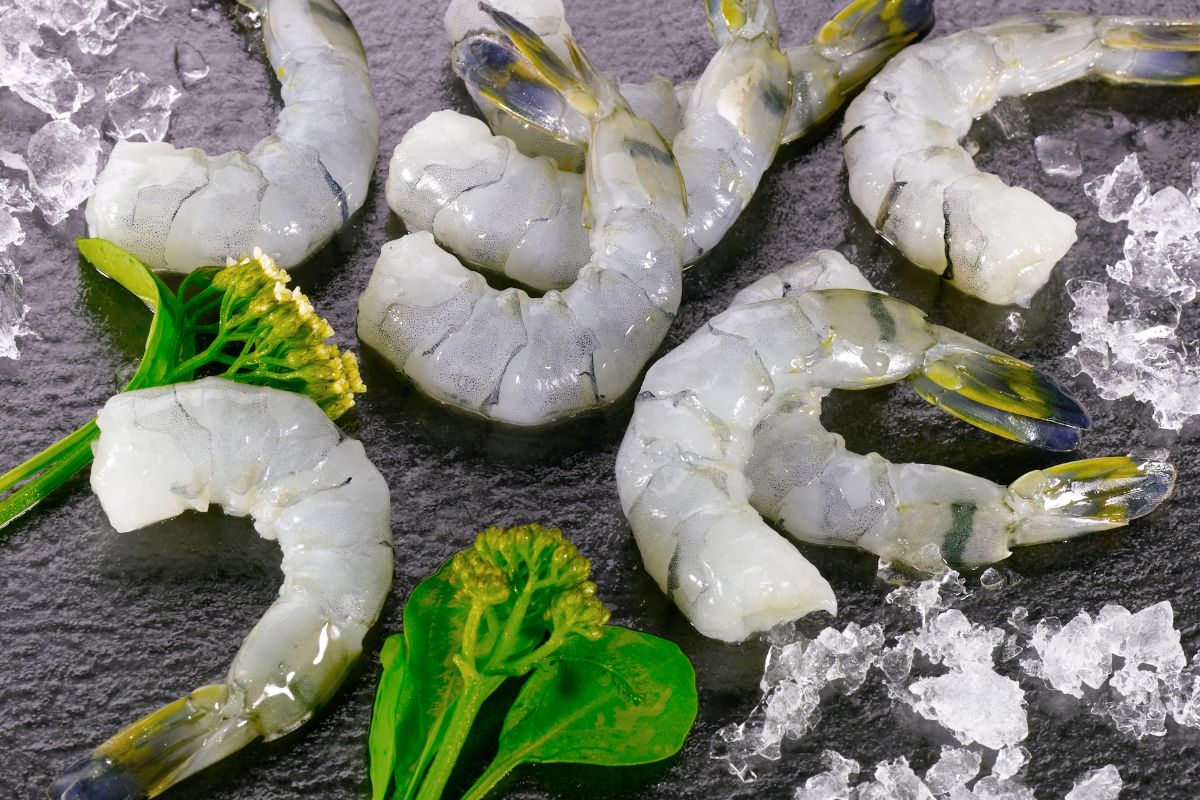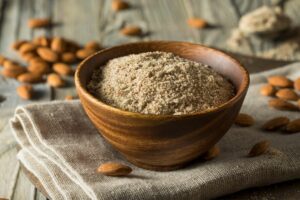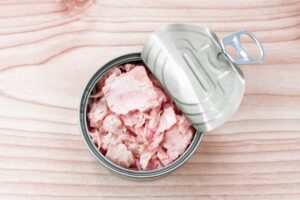More often than not, people will save shrimp for those special occasions, whether that be a family party or a celebration for the holidays, their unique buttery, salty, and sweet flavor is a delight to enjoy every once and a while.

However, you need to be extra careful when storing shrimp since if you leave it in the refrigerator for a little too long, it can end up leading to some nasty side effects when you come to consume it.
This is why it’s well worth learning how long you can store shrimp so that you and your guests won’t be in any danger of becoming ill after enjoying it.
If you’re planning on buying a pack of shrimp and you’re a little concerned about how long you can keep them chilled, there’s no need to worry as we have all the information you need right here including how long it can be stored, and how to tell if it’s gone bad!
The Best Way To Store Raw Shrimp
Many people already know that you should place raw shrimp in the refrigerator as soon as you bring it home, but you should also always keep it in the original packaging and place it at the very bottom of the refrigerator, preferably on top of a layer of ice, to keep it fresh for the longest.
Shrimp perishes incredibly easily and will quickly break down in taste and flavor, even when it’s being kept in the refrigerator, so keeping it in the coldest part of the refrigerator will help to slow this decline down and keep the shrimp as fresh as they can be.
If you notice that a bit of liquid has started to leak from the packaging of the raw shrimp, this is most probably coming from the shrimp head (hepatopancreas).
While this is perfectly normal for the shrimp, it can still be worth keeping it away from any other food in the refrigerator to avoid any risk of cross-contamination.
How Long Will Raw Shrimp Last In The Fridge?
Raw shrimp, on average, will remain good for up to 2 days when stored in the refrigerator. Just like a lot of other seafood, shrimps attract bacteria incredibly easily because of how small they are.
Because of their size, they have a higher surface area to volume ratio which is easy for bacteria to access.
Additionally, a lot of shrimp is not thoroughly cleaned when it’s first caught, mainly because of how difficult it can be to clean out all the innards, which is another reason why it will go off so quickly.
You’ve also got to keep in mind that shrimp are sea creatures, and are accustomed to living in temperatures that are just a few degrees higher than freezing, so even when you keep them in the fridge, this still isn’t going to be cold enough to keep them fresh for very long.
Does It Matter If They Are Shelled Or Shell-On?
Whether the shrimp you buy still contains their shells or not, this will in no way affect how long they can be stored, so you should always only keep them in the fridge for up to 2 days maximum, regardless of this factor.
How To Tell If Shrimp Has Gone Bad
If you’re a little unsure about whether your shrimp are still good to eat, the biggest giveaway is their texture and smell.
If you notice that the shrimps have become slimy and begin sliding around the packaging, there’s a high chance they have gone bad and should be thrown out immediately.
Bad shrimp will also give off an incredibly unpleasant pungent odor which is very similar to ammonia.
The foul smell and texture are the two main things to look out for, but there are a few smaller symptoms that can begin appearing on shrimp that have been kept in the fridge for a little too long.
Black dots, dry or shrunken eyes, and a hollow color are all signs that the shrimp has gone bad too, so be sure to check your shrimp thoroughly before deciding to sizzle them up, just so you can be on the safe side.
What Will Happen If You Eat Bad Shrimp?
Bad shrimp can give off some very harmful and unpleasant side effects, which is why you should always take the utmost care to ensure they are completely safe and edible before you begin preparing them as part of a meal.
Nausea, vomiting, diarrhea, fever, and abdominal pain are just a few of the effects that can result from eating bad shrimp, but if they have been out of date for an extended period, it can even lead to hospitalization.
Symptoms will usually start appearing between 30 and 60 minutes after consumption, so if you want to avoid abruptly leaving the dinner table and rushing straight to the toilet with your hands covering your stomach, always check the quality of your shrimp first.
Can You Store Cooked Shrimp In The Fridge?
If you have some cooked shrimp leftover from a meal, you can simply store it in the fridge where it will remain good for 3 to 4 days, however, as a rule of thumb you should try to avoid going over the 4-day mark.
While reheating the shrimp, make sure to use a slightly lower temperature than you did originally so that you don’t end up overcooking it, since this can be much easier to do the second time when they will take less time to heat up.
The Best Ways To Reheat Cooked Shrimp From The Fridge
There are 4 different ways you can safely and quickly reheat cooked shrimp which has just come out of the fridge. These methods are:
- Oven – Preheat the oven to 300 degrees Fahrenheit, wrap the leftover shrimp with aluminum foil, let it bake for 15 – 20 minutes, and make sure to check it frequently so that it doesn’t become rubbery and overcooked.
- Microwave – When reheating shrimp using a microwave, make sure to splash them with water before doing so to ensure they don’t end up becoming rubbery. On a high setting, the shrimp will be ready after about 2 minutes, but if it still seems undercooked, put it back in for another minute before checking again.
- Frying Pan – Make sure to only add a splash of oil in the pan when heating up shrimp, and try to always spread the seafood out so that they can all cook evenly. The shrimp will only need to be reheated for 2 to 3 minutes before it will be piping hot and ready to serve.
- Steamer – Keep in mind that steaming is much better suited for shrimp that has been grilled, as opposed to breaded shrimp. When filling up the steamer, make sure the insert isn’t touching the water, so that the shrimp don’t end up being boiled. After you smell that familiar shrimp aroma after 2 to 3 minutes, they will be ready to serve.
Can Cooked Shrimp Also Be Stored In The Freezer?
Cooked shrimp will remain fresh for between 6 to 9 months when it is placed in an airtight container and stored in the freezer.
Freezing pre-cooked shrimp is actually very common, and in fact, many grocery stores will sell shrimp this way since it simply requires the consumer to thaw them out before cooking.
If you have some leftover cooked shrimp, you should always immediately store it away in the fridge or freezer since it will only last up to 2 hours when left at room temperature before it will start becoming infested with bacteria.
How To Store Raw Shrimp In The Freezer

Freezing shrimp will keep them fresh for far longer than if they are in the fridge.
While you will have to go through the whole process of unthawing them, it can still be the better way to store them since it allows you to take them out whenever you feel like it without having to worry as much about them going off.
Shrimps will remain edible when stored in the freezer for up to 1 year, but with that being said, they will be at their best in terms of quality and taste for around 3 months.
Therefore, it’s usually advised to enjoy them sooner rather than later if you want to get the most out of the flavor and texture.
It should also be noted that freezing shrimp tends to harm the texture, making them a lot softer and removing a lot of that firm chewiness that many people love them for, so they should only be stored in this way if you aren’t as concerned about protecting their quality.
When storing shrimp in the freezer, always place them in a small airtight bag, and try to squeeze out any of the excess air as best you can.
The Best Way To Thaw Frozen Shrimp
A lot of people will dread the thawing stage, but the truth is, there are some ways you can safely defrost frozen shrimp in a quick and easy fashion so that you can get to cooking them as soon as possible.
The best method is to fill up a bucket of cold water, and then remove the frozen shrimp from their airtight bag before placing it in a new zip-top bag.
Submerge this bag in the bucket of water for 20 to 30 minutes, and place a lid over the top, just to make sure that they are all fully submerged.
This is a much faster method than simply leaving the shrimp to thaw out in the refrigerator, which can take about 12 hours.
While this can be fine if you’re not planning to use the seafood until later in the evening, if you need them ready ASAP, this water method is much more ideal.
It’s worth keeping in mind that if you aren’t planning to use the thawed shrimp right away, then they can be stored in the fridge for up to four days before they will need to be discarded, so you will have a bit of time to let them chill after they finally defrost.
Why It’s Important To Defrost Shrimp Before Cooking
If you start to cook any seafood while it’s still frozen, the heat will begin to cook the outside of the fish first, before then heating up the inside as it begins to thaw.
It’s already very easy to overcook shrimp, but cooking them from frozen elevates this risk tremendously.
Additionally, because it makes it much harder to tell when they’re actually done and ready to eat because of the alternate heating method, it’s never considered a good idea to cook them straight from frozen.
Can You Refreeze Shrimp?
You should never consider refreezing shrimp once they have already been thawed since it can drastically affect the flavor and texture of the food, and can also make it potentially harmful to eat.
When you refreeze a piece of food, the second thaw will break down even more cells than it did the first time, which will leach out the moisture and make it much easier for it to become infested by bacteria, so it’s worth avoiding altogether.
Does The Size Of The Shrimp Matter?
Bigger shrimps will not last any longer in the fridge than smaller ones, and will still only stay fresh up to 2 days maximum.
With that being said though, this is a different story when cooking them, as larger shrimps will take a little longer to heat up, though with that in mind, they will still grill extremely quickly.
As a reference, extra jumbo shrimp (20 per pound) will be grilled and ready to eat after 7 or 8 minutes, while colossal shrimp (12 to 15 per pound) will take between 8 and 9 minutes.
These are also approximately the same cooking times if you were using indirect grilling on a medium heat to cook these unique types of shrimp.
Peeled Or Unpeeled Shrimp, Which Should I Buy?
When it comes to storage and shelf life, peeled and unpeeled shrimp are exactly the same, so you should only keep them in the fridge for up to 2 days before you will need to cook them.
With that being said, the bigger differences come with the taste and flavor.
Unpeeled shrimp tend to retain a lot of the juice and fishy flavor thanks to the shell, while peeled shrimp can tend to taste a little more hollow and not as potent in their overall flavor.
You will also need to devein or clean unpeeled shrimp, and while this doesn’t take too long and can be done easily, if you’re planning on preparing a bulk of shrimp at once, this can end up adding a lot more time to the preparation phase before you even get to cooking.
Best Ways To Cook Shrimp
When it’s finally time to start cooking some buttery-flavored shrimp for you and your family or friends to enjoy, it can be worth knowing about the several different cooking methods you can choose from, and what makes them all unique.
Grilling
Grilling is usually seen as the easiest and most time-efficient cooking method when it comes to shrimp, especially since an entire batch can be ready to serve in as little as 10 minutes.
The close exposure to the heat will make the exterior of each shrimp slightly crispier than usual, while still being soft and tender on the inside, making this the perfect way to cook shrimp if you’re planning to use them as an appetizer or even as party food.
The overall flavor won’t change too much, but since you can easily sprinkle over any seasonings or marinades, it makes this method incredibly versatile and extremely easy.
This method is perfect for people who may have never cooked shrimp before and are a little worried about overcooking, or who are limited on the amount of time they can spend preparing the dish.
Steaming
Steaming a batch of shrimp will help to make them as soft and tender as they can be, ensuring that they give off the maximum amount of flavor with each and every bite you take.
Because the shrimp won’t be exposed to direct heat, it also makes it incredibly difficult to overcook shrimp when using a steamer.
Since a handful of shrimp can be prepared in the steamer in 5 to 6 minutes, it’s the perfect way to prepare these bitesize seafood treats if you want a largely hands-off cooking method that does all the work for you in a matter of minutes.
Pan Fry
Unless they are being reheated, shrimp should always be fried at a high heat since this will give them the best texture, being a delightful mixture of juicy and tender.
Because they require a high temperature to cook well, it does mean that you will need to take care when pan-frying shrimp since they will easily overcook.
To be on the safe side, make sure to flip them over at least twice while cooking, and try not to cook them any longer than 7 minutes.
To make the shrimp taste even more delicious on the taste buds, it can also be a good idea to use butter at the bottom of the pan rather than oil.
This not only helps to make the texture all the more creamy and sweet, but it also helps to keep the shrimp moist which can reduce the risk of them becoming too firm or crispy while in the pan.
Summary
Shrimp are notorious for going bad in essentially no time at all, so it’s crucially important to always keep them in the refrigerator as soon as you bring them home, and try not to leave them in there for more than 2 days.
Always remember that if you’re still a little unsure about whether your shrimp are still fresh to eat or not, the texture and smell are what you should pay attention to first, and if you do intend to use them for a few weeks or months down the line, freezing them is always the best option.







